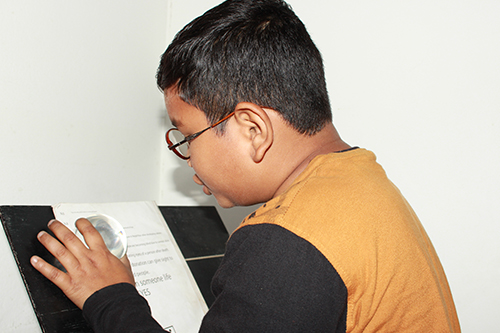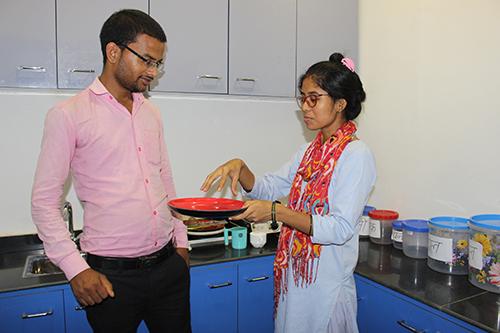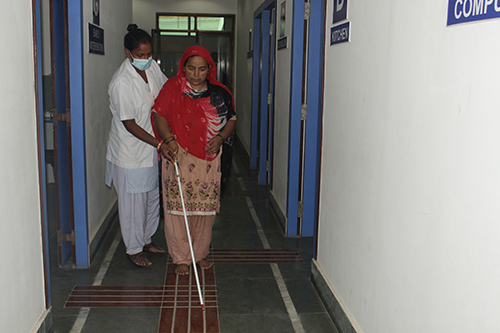Biratnagar Eye Hospital (BEH), Biratnagar
Subspeciality and Surgeries
1. Vitreo – Retinal Department
Retina department of BEH is one of the referral center of Eastern Nepal. All types of retinal diseases are evaluated and treated. Special focus on Diabetes: High blood sugar damages blood vessels of the body including retinal vessels. This cause diabetic retinopathy that can lead to severe visual impairment. Therefore, early detection and timely treatment is the only way to preserve the sight.
Retinal Diagnostic and Treatment available:
- Diagnostic A-SCAN & B- SCAN: to evaluate the posterior segment of the eye if media opacities hinder a proper fundus examination.
- Fundus photography
- OCT evaluation for detection of retinal disease
- Digital Fluorescein Angiography (FFA) & Indocyanine Green Angiography (ICG) Photography of retina/choroid with a dye to study details of retinal & choroidal blood vessels
- Retinal laser (Multispot Green Laser) for treatment of diabetic retinopathy, retinal vein occlusion, retinal break etc.
- Transscleral Cyclophotocoagulation (TSCPC)
Facilities of all forms of retinal surgeries are available
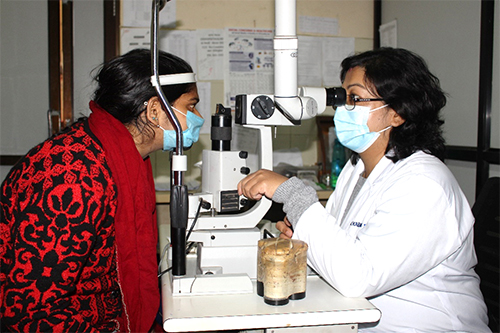
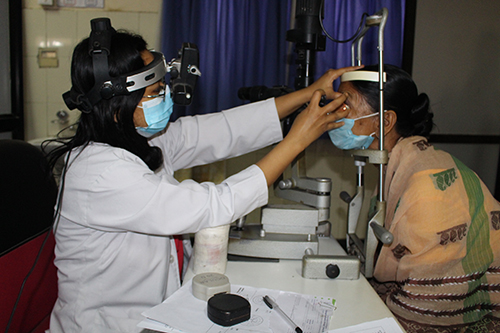
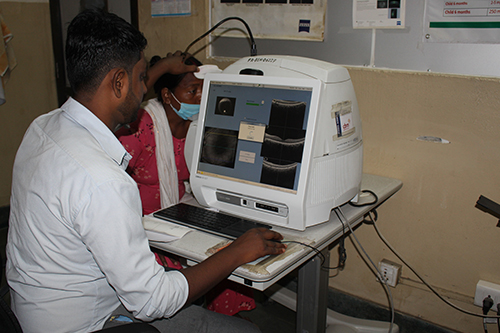
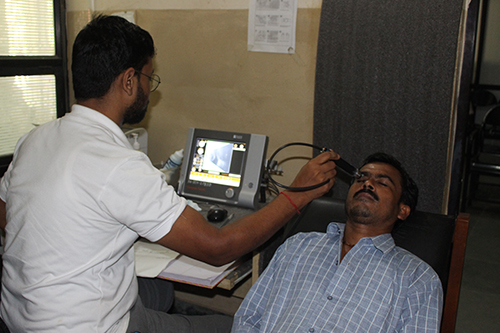
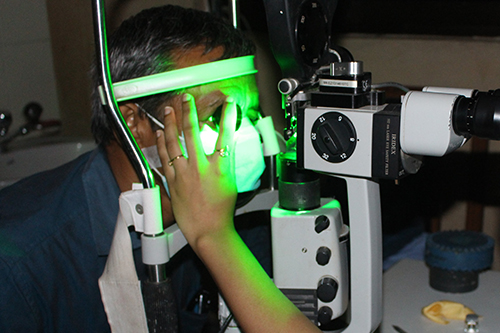
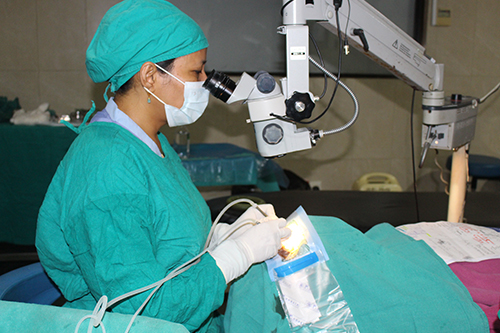
Vitreo-Retinal Surgeries
Common Indication
Diabetic retinopathy, retinal detachment, bleeding within the vitreous cavity, macular hole, dislocated lens.
Retinal Detachment Surgery – Scleral buckle
This treatment involves placing a flexible band or silicone sponge (scleral buckle) around the eye to counteract the force pulling the retina out of place. It is often combined with draining the fluid under the detached retina, allowing the retina to settle back into its normal position against the back wall of the eye. Cryocoagulation is applied at the retinal tear.
Vitrectomy Surgery (PPV)
In a vitrectomy the vitreous gel, which is pulling on the retina and / or contains blood, is removed from the eye. Different forms of replacements are applied, like gas or silicone oil. The body’s own fluids will gradually replace a gas bubble. In case of oil a later surgical removal is needed.
Surgery: Patient has to get the date for surgery and get admitted one day before surgery.
Hospital stay: Most patients two days after surgery
Discharge: On the second post-operative day
Post-operative medicines are given
Counselling: Special instructions on positioning after surgery is given (like face down, left side, right side) which should be followed strictly.
Patients need to return for 1st follow-up: 2 weeks after surgery
Further follow-ups are often needed over a longer time
2. Pediatric
- Child friendly pediatric department
- Visual acuity testing for children (CAT, LH-Test)
- Orthoptic services using VTS4 & Synoptophore
- Squint Evaluation and Treatment
- Evaluation and provision of glasses in refractive error. Child friendly pediatric optical unit
- Cycloplegic Refraction
- Evaluation and treatment of amblyopia
- Evaluation and provision of low vision devices
- Post-operative follow-up
- All types of pediatric eye surgeries (Cataract, Glaucoma, Squint, Ptosis etc.) are available.
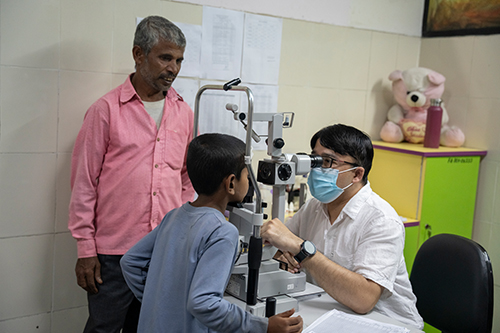
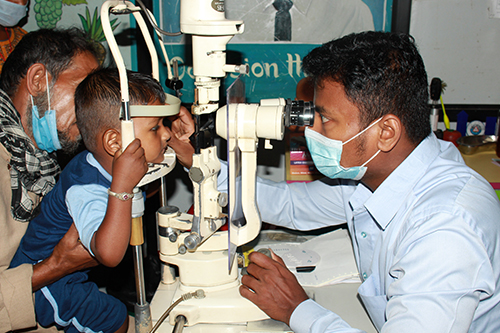
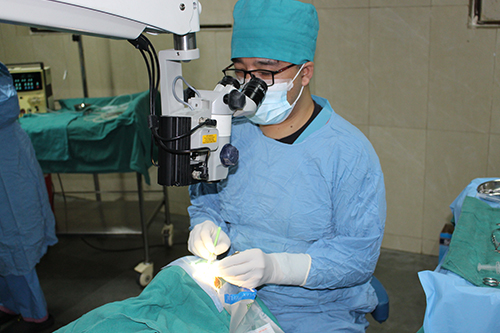
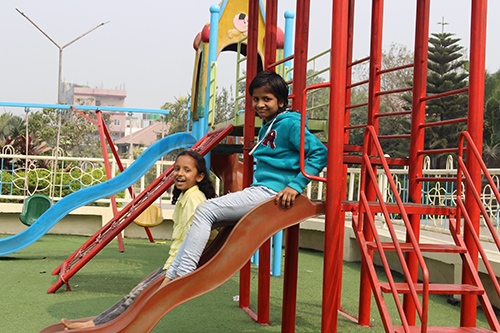
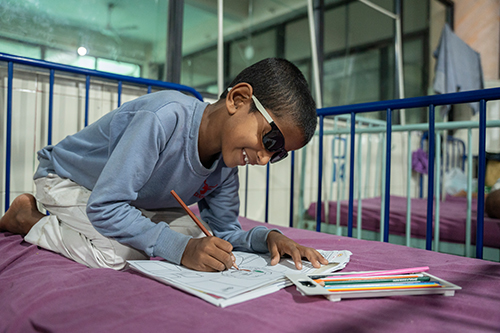
Cataract Surgery in Children (up to 15 yrs)
Children with cataract should be operated as early as possible to enable normal visual development. The standard surgical procedure is extra capsular cataract extraction with primary posterior capsulorhexis, anterior vitrectomy & posterior chamber lens Implantation
Biometry
Surgery: One day after admission
Discharge: 3-4 days after surgery
Required spectacles are provided
Post-operative medicines are given
Parents are advised to return with their children for Follow-up : 1, 3, 6, 12 months after surgery
3. Myopia Clinic
Special Myopia clinic was started in 2020 for proper management, control and prevention of myopia. It is equipped with latest technology like Open field AR, IOL master 700 for evaluation and planning of different myopia control strategies. It has been providing services to more than 1000 patients annually with personalized counseling for different myopia control options like Peripheral defocus spectacles, Atropine eye drop 0.01% and Orthokeratology.
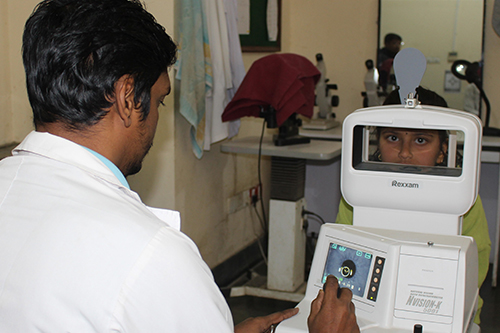
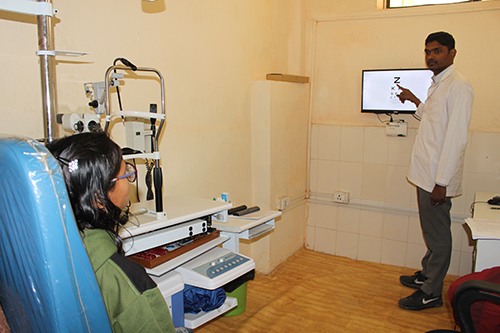
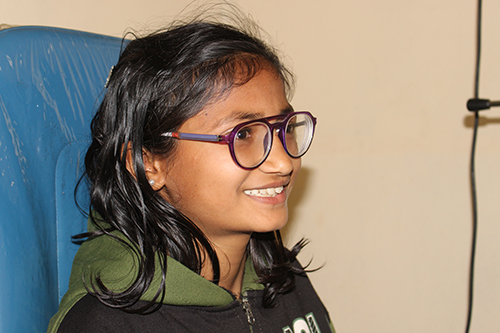
4. ROP Clinic
Retinopathy of prematurity (ROP) is a potentially blinding eye disorder that primarily affects infants born before 34 weeks of gestation and/or weighing 1750 grams or less. If diagnosed on time and treated early, it can prevent vison loss in infants and can save them from the pain of lifelong blindness. To improve neonatal care by providing timely ROP screening and treatment services in neonatal intensive care units (NICU) of Province no 1, BEH has been doing ROP screening since NOV 2020 by a team of trained staff.
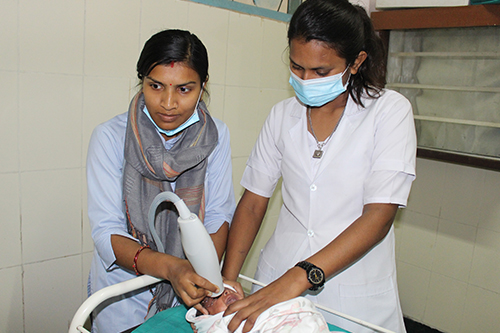
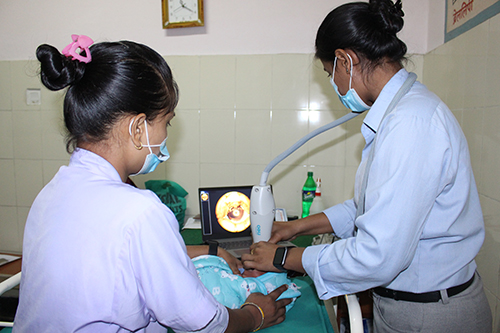

5. Cornea Department
At Biratnagar Eye Hospital, we have a team of professional Cornea specialists who are committed to giving you the finest care possible to preserve your vision. With over 1500 corneal transplants completed over the years, it is a referral facility for cornea care in eastern Nepal.
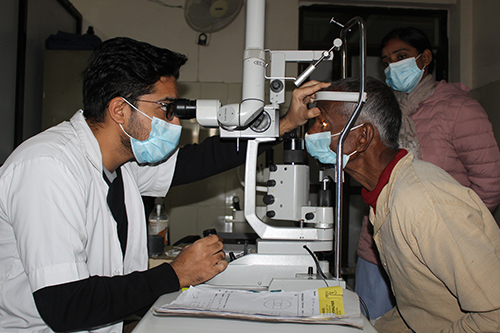
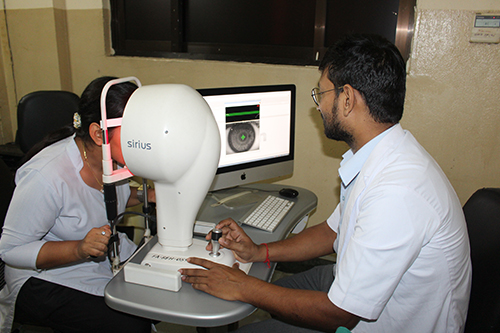
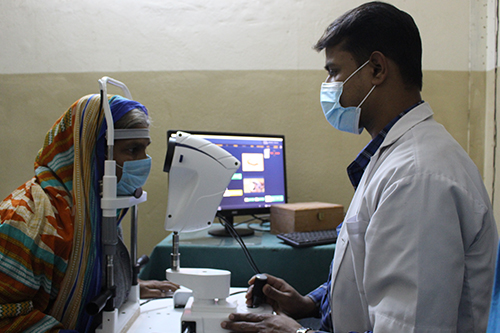
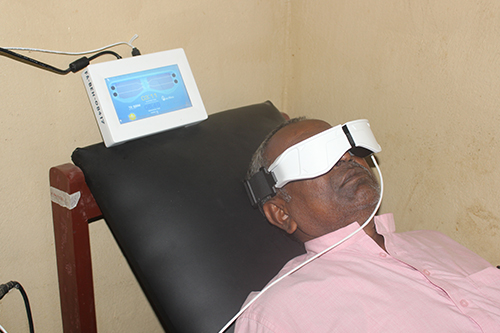
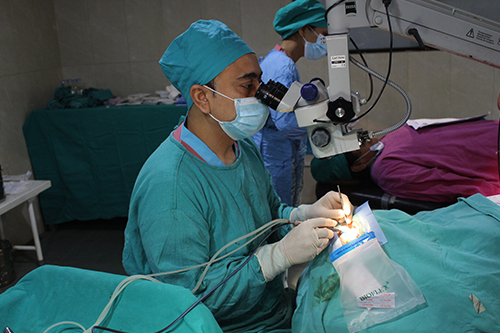
Diagnostics:
- Our lab is one of the best in the country for diagnosing corneal ulcers. We have fluorescence microscopy with calcofluor white stain in addition to Gram stain, KOH stain, and culture/sensitivity facilities, which improves our capacity to diagnose the organisms causing corneal ulcers.
- Corneal topography services are offered for keratoconus screening and diagnosis. It is also a crucial instrument for the preoperative assessment of cases involving refractive surgery (LASIK/PRK).
- Ocular Suface Analyser (IDRA) which is a state of the art diagnostic tool for evaluation of Dry eye diseases is available.
- Anterior Segment OCT in our center aids us in evaluation of various corneal and anterior segment disorders.
- Specular Microscopy service is present for evaluation of corneal endothelial health for diagnosis of diseases like Fuch Endothelial dystrophy and is also a good diagnostic tool to have for preop evaluation of cataract surgery.
Treatment:
1. Keratoplasty :
Various types of Keratoplasty services are available ranging from full-thickness transplant to partial-thickness transplant (lamellar keratoplasty)
- Therapeutic Penetrating Keratoplasty (TPK): It is performed for corneal ulcers that have perforated or are resistant to conventional medical treatment.
- Optical Penetrating Keratoplasty (OPK): Clear donor corneas are transplanted to cure a variety of disorders causing corneal opacities.
- Descemet Stripping Endothelial Keratoplasty (DSEK): Diseases of the back of the cornea like Endothelial Dystrophies are treated with posterior lamellar graft.
- Deep Anterior Lamellar Keratoplasty (DALK): Keratoconus and diseases of the front (anterior) of the cornea are treated with anterior lamellar graft.
2. Refractive surgery:
- LASIK/PRK: Patients who desire clear eyesight without the need of visual aids like glasses and contact lenses get these done on a regular basis.
- Collagen Cross Linking (CXL): We are the sole provider of this facility in eastern Nepal for the treatment of Keratoconus.
- Amniotic Membrane Transplantation are performed mainly for Chemical injuries of the eye.
- Stem Cell Transplants: Simple Limbal Epithelial Transplant (SLET) and Conjunctival Limbal Autograft (CLAU) are performed for diseases causing limbal stem cell deficiency.
- Pterygium Surgery: We perform P.E.R.F.E.C.T Pterygium Extended Removal Followed by Extended Conjunctival Transplantation) for Pterygium which is a growth of white tissue on the cornea.
- Activa Therapy: This is a device which has huge benefits in treatment of Dry Eye disease is also available.
Surgical appointments can be taken from the Cornea department.
Hospital Stay of 2-3 days is required after Corneal Transplantation and the patient will have to come for follow-up a week later.
In case of other surgeries, overnight stay in the hospital after surgery is recommended. The patient will be discharged the following day and will have to follow-up in 1 or 2 weeks depending upon the type of surgery.
6. Glaucoma Services
At Biratnagar Eye Hospital, we provide comprehensive care for patients with Glaucoma, including early detection , advanced treatment options and ongoing management.
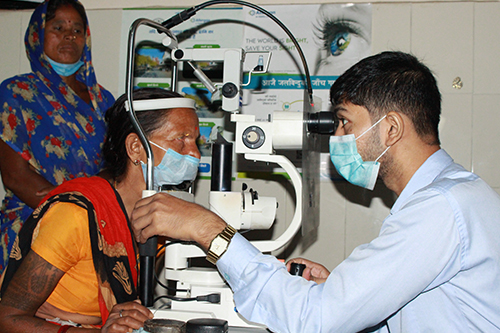
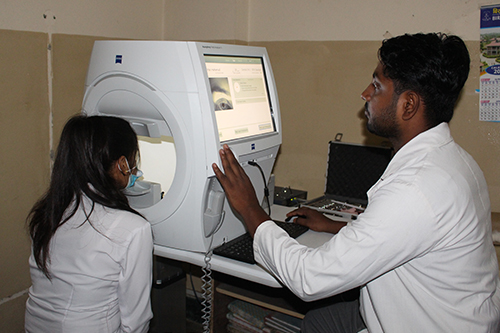
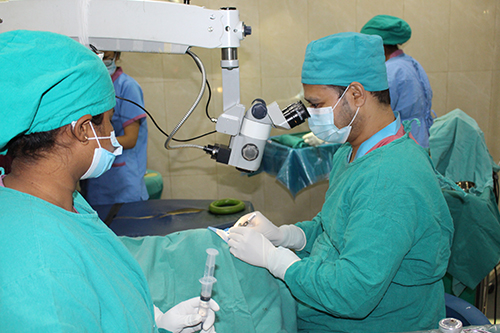
Understanding Glaucoma
Glaucoma is a group of eye condition that can cause blindness by damaging the optic nerve. Early detection and treatment are crucial.
Symptoms and Risk Factors
- Glaucoma often shows no early symptoms.
- Common symptoms are Eye pain, halos around light, blurred vision etc.
- Common risk factors are Age, Family History, High intraocular pressure
Diagnostic Services
- Tonometry (Goldman Applanation Tonometer, non contact tonometer)
- Visual field testing with Humphrey Field Analyzer.
- Optical Coherence Tomography (OCT)
- Gonioscopy (For examining the drainage angle)
- Pachymetry (measuring corneal thickness)
- Disc Photography
Treatment Options
Medical Management:
All types of antiglaucoma eye drops and systemic medications
Laser Treatments:
- Nd YAG Laser Iridotomy
- Cyclophotocoagulation
Surgical Interventions:
- Trabeculectomy
- Trabeculectomy + Trabeculotomy
- Combined Surgery ( Cataract Surgery + Trabeculectomy )
- Tube Surgery (AADI )
- Clear Lens Extraction
- Surgical peripheral Iridectomy
7. Orbit, Plastic and Lacrimal (OPAL), Ocular prosthesis and Ocular oncology
This is the subspeciality in ophthalmology that specializes in reconstructive surgery, plastic surgery and cosmetic surgery related to the eye and its surrounding structures.
Services offered:
1. Eyelid surgery
- Inward turning (entropion) and outward turning (ectropion) of eyelid
- Blepharoplasty (cosmetic and functional eyelid surgery to correct droopy eyelids, remove excess skin, make eyelid crease, remove lower eyelid bags)
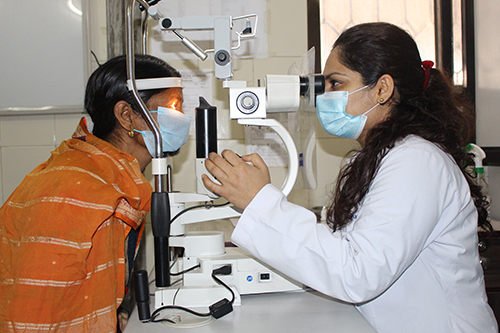
2. Orbital surgery
- Treatment of orbital tumors, inflammations
- Thyroid Eye Disease
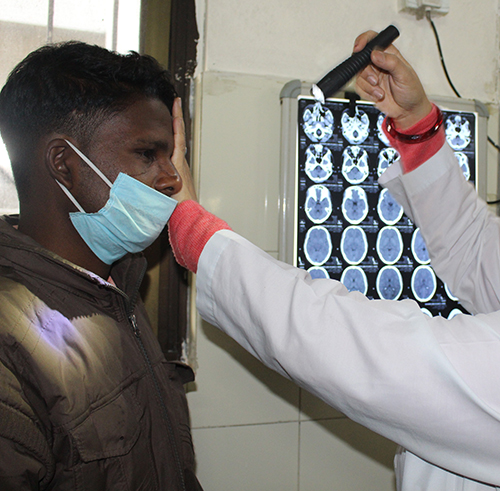
3. Lacrimal surgery
Procedures to address tear duct blockage and other tear drainage system issues
- Treatment of acute dacryocystitis, lacrimal sac abscess
- Syringing and probing in congenital nasolacrimal duct obstruction
- Dacryocystectomy (DCT): removal of lacrimal sac
- Enternal Dacryocystorinistomy (DCR): surgery done through skin incision
- Endoscopic Dacryocystorinistomy (DCR): surgery done through nasal passage with endoscope
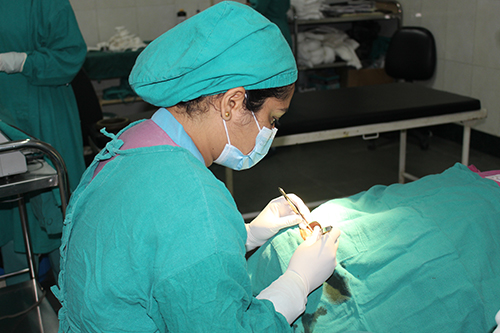
4. Ptosis surgery:
Correction of drooping eyelids caused by muscle weakness
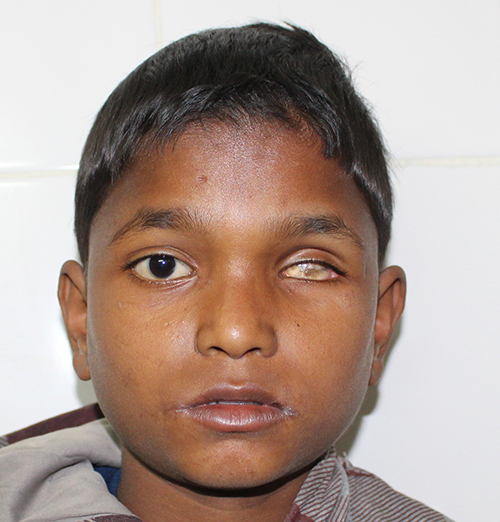
5. Reconstructive surgery:
Repair of defects caused by trauma, tumors or congenital conditions

6. Facial spasms:
Condition in which facial muscles function abnormally and are no longer under the direct control of the brain. It can affect the entire face or just around the eyes. (benign essential Blepharospasm, hemifacial spasm, Meige syndrome and Myokimia). Botox injections are used to correct them.
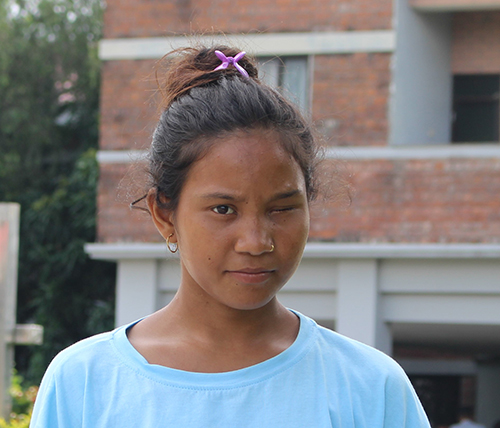
7. Ocular Oncology:
Treatment of eyelid tumors, intraconal tumors, extraconal tumors, Retinoblastoma
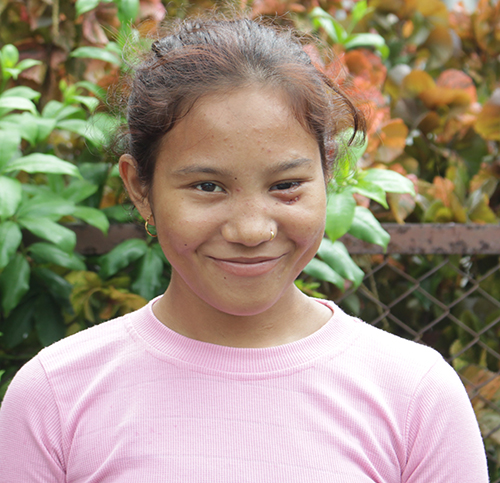
8. Ocular prosthesis:
- After removal of an eye, the appearance can be brought back to near normal by customized artificial eyes (prosthesis).
- An artificial eye fits within the socket behind eyelids.
- It mimics natural eye, insertion and removal is easy and one has to clean once a month.
- The eyelids can comfortably close on artificial eye.
- If the socket that holds the artificial eye is shrunken (contracted socket), one may require socket reconstruction surgery prior to fitting of an artificial eye.
8. Contact Lens Services
Contact lens clinic was started since 2009 providing services of various lenses such as Soft spherical/Toric, Prosthetic, Gas permeable, Rose K, Scleral, Orthokeratology, X chrome and Bandage contact lens for correction of refractive error, management of irregular corneal surfaces including dry eye ,cosmetic and therapeutic purpose.
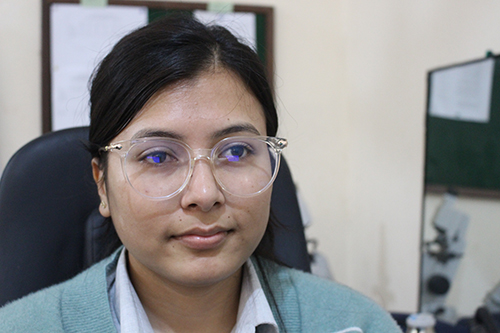

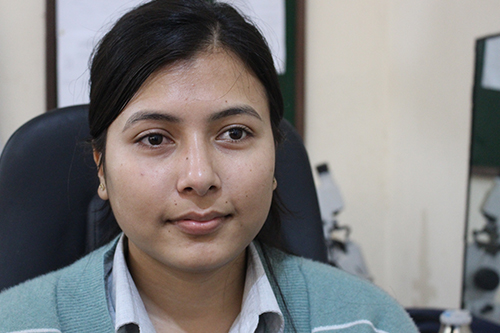
9. Orthoptics Services
Orthoptic services available since 2010 providing services to more than 3500 patients annually. Equipped with both office as well as home vision therapies including VTS4 for better management of Non strabismic binocular vision anomalies (NSBVAs) and amblyopia.

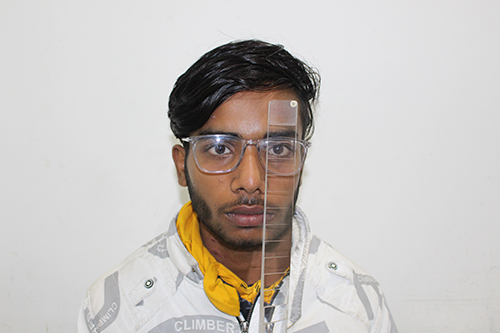
10. Low Vision, Hearing, Language, and Speech Rehabilitation Unit
Low vision service (LVS) available since 2008 with aim of helping patient with best corrected VA < 6/18 and visual field less than 20 degrees in better eye by proper evaluation and advise on use of different non-optical and optical aids (like special spectacles, optical magnifiers, electronic magnifiers) to aid their daily living activities. Lately, Low Vision Rehabilitation Service (LVRS) started in 2020 is effectively providing rehabilitation service to patient with low vision and incurable blindness with mobility training as well as environmental modification counseling.
